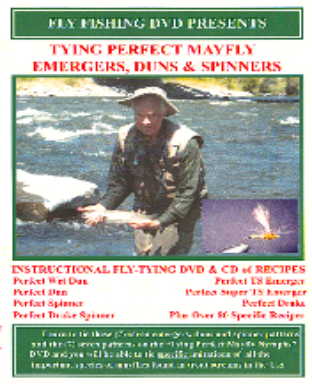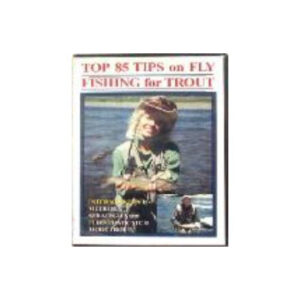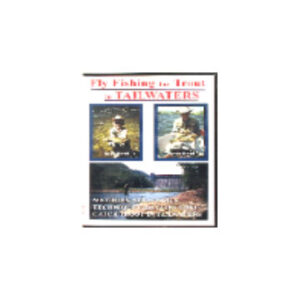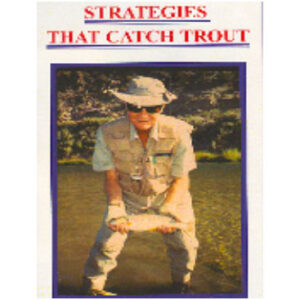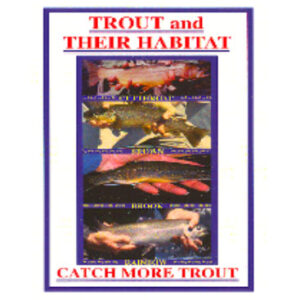Learn to tie all our Perfect Fly Mayflies.
Patterns:
The mayfly patterns including in these programs are selected to imitate the 43 (forty-three) categories of mayflies that are included in our Perfect Fly selection. We attempted to keep the number of different patterns and recipes as low as possible. The result was forty-three categories. These categories closely represent over one-hundred species taken from the genera of all the important families of mayflies. In each of the 43 categories, there are usually 5 (five) and may be as many as 6 (six) different patterns specifically selected to cover the various stages of the mayfly species covered in that category. We believe that there’s enough difference in the naturals in each of the categories to justify tying and fishing specific imitations that represent them. Keep in mind, this covers the entire United States and Canada and you may only be concerned with the mayflies that are prevalent in the area you fish.
Tying Perfect Fly Mayfly Dun, Emergers
and Spinners
Learn to tie our 7 “Perfect Mayfly Emergers, Duns and Spinners”. By varying the size and color of materials you will be able to tie over 120 highly effective specific imitations of all the important mayfly species of duns, spinners and emerging duns that trout feed on from coast to coast.
These are the seven (7) basic patterns:
1. Perfect TS Emerger
2. Perfect Super TS Emerger
3. Perfect Dun
4. Perfect Drake
5. Perfect Spinner
6. Perfect Drake Spinner
7. Perfect Wet Dun
Emergers:
Imitation can only represent the emerging insect at a specific stage at a specific time during this short interval of time. Trout take advantage of the emerging mayflies during this transition time, eating them with ease. Some mayflies emerge on the bottom or somewhere in between the bottom and the surface, and swim to the surface as duns. Our “ts” or emerging combination nymph and dun, has the shuck still hanging or trailing on the “almost” emerged dun. The “ts” nymph resembles a mayfly taking a jump suit off. Our “Ea”, emerging adult or wet fly imitation, represents those mayflies that emerge below the surface.
Duns:
Fully emerged adult mayfly duns, our “D” patterns, have two main upright divided wings like real mayflies. They do not have a single wing or just totally lack wings like some mayfly imitations. When upright, these wings sit back at an angle to the body, not straight up like the few imitations that do have wings. We don’t go so far as to add the tiny hind wings for those species that have them, but we do think the main wings, which represent almost half of the total configuration or silhouette of a mayfly, should be somewhat realistic.
Spinners:
When mayflies become sexually mature, they lose their dull outer covering and become what anglers call spinners. Our “S” patterns represent the spinners. Although some specie of these spinners may die and fall in ripples and faster moving water, they eventually wind up concentrated in eddies or smoother flowing water such as pockets and the tail end of pools. This is usually where the trout go to take in the easy offerings. Again, our “Perfect Fly” imitations are selected to catch trout in the type of water that trout feed in depending upon the particular species of mayfly. Presentations made in turbulent water will drown most of our spinners. In that event, you probably presented the fly in the wrong place, but even so, that is exactly what happens to natural spinners that fall in turbulent water. They get drowned and even then, your fly is properly imitating the natural.
The wings of spent spinners lie flat on the water, not upright like the duns. This fact, added to the fact that spinners float low in the surface film, make them difficult to see even in the best situations, especially the smaller spinners – the real ones and the fakes ones.
Spinners are yet a different body and wing color from that of the dun, sometimes drastically different. They are thinner, slimmer and usually have clear or transparent upright wings and a tail that is usually longer than the duns tail. The female spinners are either involved with the mating process and are generally not available for the trout to eat; or they are in the process of laying their eggs and may or may not be available for the trout; or they have collapsed after laying their eggs with spent wings and a body that is void of eggs. The male spinners may or may not be available, depending on where they die, on water or on land.
Typing Perfect Mayflies:
Our mayfly tying DVD shows you how to tie each of the following (7) seven mayfly patterns. These patterns will imitate any stage of life of any of the mayfly species that trout feed on in the United States. Once you learn to tie these, you will never need to tie another mayfly pattern. The flies shown do not imitate any particular species of mayflies.
1. Perfect TS Emerger:
When the nymphal shuck splits and the dun emerges, the shuck often sticks to the duns tails. Even if it doesn’t stick, there is a short period of time the empty shuck is still attached to the tail. This transition must occur in order for the dun to emerge. When this occurs the mayfly is very subject to being eaten by a trout. This fly imitates the duns and nymphal shucks for size 10 and smaller mayflies when the dun has emerged but the shuck is still stuck to its tails. This represents most all mayflies that hatch on or near the surface of the water.
2. Perfect Super TS Emerger:
This fly imitates the larger duns and nymphal shucks for size 10 and larger mayflies when the dun has emerged but the nymphal shuck is still stuck to its tails. A different method and materials are used for this large size emerger because of the size limitations of biots. The ribbed and specially applied dubbing imitates the segmentation of the larger mayflies body well. The split CDC wings represent the real unfolding wings of the large emerging mayflies. This fly floats low in the surface skim like the real ones.
3. Perfect Dun:
This is our basic dun pattern for mayflies up to a hook size 12. This fly will probably be the most used fly of all the patterns we have simply because anglers like fishing the dry fly. The dun is only available for a very short time it is on the surface of the water. This varies from species to species, stream to stream and the environmental conditions at the time. Most often it is only a few seconds. It’s biot body imitates the real segmentation of the duns body well. Divided upright wings and a split tail closely resembles the real mayfly.
4. Perfect Drake:
This is our dun pattern for the large mayflies, mostly drakes. Biots only get so long and do not work for the large drakes. The ribbed segmentation used for the body of this fly appears quite realistic although it requires a few extra steps to tie. In fact, the entire fly realistically imitates the large drakes very well. The process used for the extended body and tails of the mayfly works much better than most other methods of tying extended bodies. The split hen feather wings and parachute hackled legs add to the realism of this fly. In other words, it looks like the real drakes.
5. Perfect Spinner:
This is our basic spinner pattern for mayflies that are a hook size 12 and smaller. It uses bots for the body, split mayfly tails, hen feathers for wings and soft hackle for the legs. When wet, hen feathers tend to appear clear like the wings of most spinners. We feel they more accurately imitates the wings much better than any artificial material on the market. The turkey and goose biots looks much like the real segmented body of a mayfly. The split mayfly tails accurately represent the long tails of real mayfly spinners.
6. Perfect Drake Spinner:
This is our spinner pattern for mayflies that are a hook size 10 and larger. These large mayflies are mostly drakes. The segmented bodies of these large spinners require a special ribbed, dubbed body to closely imitate them. Like the smaller spinner patterns above, the hen feather wings, split tails, soft hackle legs together with the ribbed segmented body, closely imitates the real drake spinners. Most large mayfly spinner flies look fake. These look more like the real brown, golden, yellow, and green drake spinners.
7. Perfect Wet Dun:
Imitates those nymphs that hatch below the surface or on the bottom and (with much less tailing material, those mayflies that dive to deposit their eggs on the bottom. An example of one that hatches on the bottom is the Quill Gordon. Several species of blue-winged olives dive and deposit their eggs on underwater objects. The fly should be weighted depending on water speed and depth as well as for the purpose, diving egg layers or hatches. You will be amazed at the effectiveness of this fly.


